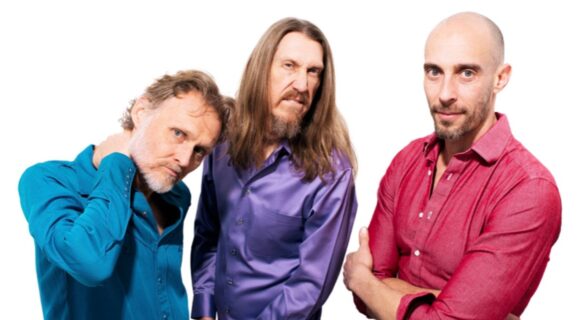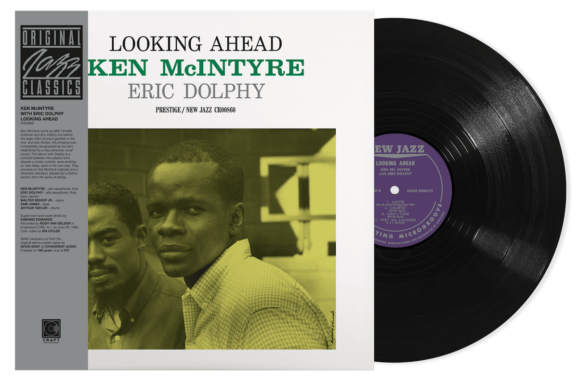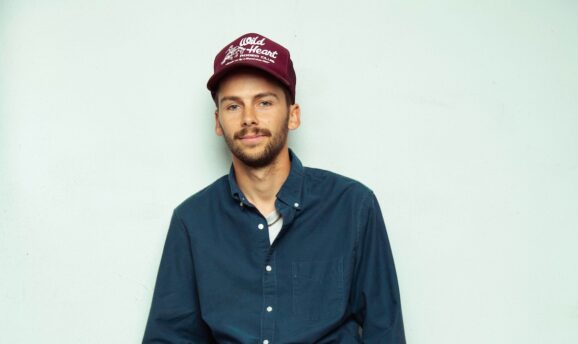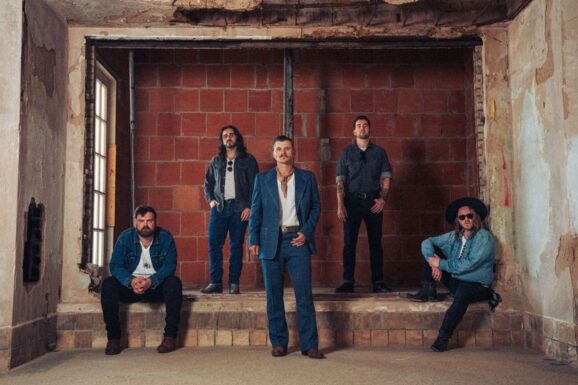The Children is an experimental project that combines the creative visions of members of Swans, Angels of Light, and Cop Shoot Cop, among others. They will be releasing their album A Sudden Craving via Erototox Decodings on 12” LP vinyl and digital download on March 8th, 2024. Born from the New York-based DIY scene, and shaped by performance in non-traditional spaces, the current core lineup of Michael Wiener, Jim Coleman and Phil Puleo have been making music together for over 15 years. They are often joined by friends and collaborators on their recordings, bringing in expansive ideas and sounds that combine acoustic and electronic elements.
The varied arts and skillsets they bring to the table include theater, acting, vocals, and songwriting from Michael Wiener, filmmaking as well as electronic music and composition from Jim Coleman, and percussion, expertise in multiple instruments, and graphic art from Phil Puleo. From that blend, paired with in-person improvisational songwriting, The Children created their latest offering, A Sudden Craving. I spoke with Michael Wiener and Jim Coleman about their evolving project as The Children.
Hannah Means-Shannon: It seems like The Children is a kind of periodic project where you all come back together from time to time to do an album. Does that way work best to fit into your other creative projects?
Mike Weiner: Collectively, we’ve gone through things like a pandemic, etc. To my mind, it’s a matter of settling into a new rhythm. There’s definitely a certain amount of reinvention as well. We are what I’d reductively categorize as a sporadic project that has ebbed and flowed. But when it’s active, it’s been really fertile. There have been geographic migrations, marriages, and all sorts of things. We’ve been separated by different things, but we’ve had the blessing of coming back together to release this new record, and I’m hopeful that this will also lead to more material, and of course, live performances. We tend to, over time, get together when we can. Jim and I, or Jim, Phil, and I will get together and explore, and things will be written. We then add more topographical layers to what we’ve formed in the improvisatory setting.
So there’s a strong in-person component to the core of the writing that starts things off?
MK: That’s key, I’d say. There was a time recently when the in-person component was less possible. The in-person component has been generative. We’re guys who like to talk together, share thoughts, and create dialog. It’s a visceral part of what we’re doing, and of course the live shows.
Jim Coleman: I remember the first time that Michael and I were getting together to do something before there was a name or any of it. We got together in Michael’s apartment and being in the same space at the same time was primary then, and has continued to be throughout the process. A lot of this album was made in a variety of different spaces, but where we would come together in different groups and improvise in an organic process. There have been ebbs and flows to our work together. We did an invisible album that’s kind of hard to find now, and in the wake of that we did a series of “events”. I say “events” rather than “shows” because they were kind of theatrical. Then things subsided for a bit and we created most of the music that was on this record. That then sat for a little bit. So it’s been a gift to revisit that and push it out into the world.
Did you have time away from it before developing it further?
Jim: It’s a weird process in terms of how we write songs. When we get together, we get a foundation of ideas together. At the same time, Michael is getting ideas for lyrics and vocal lines. Then we record a lot of parts. At that time, I would typically go off into a studio on my own and try to bring them into more of a single form. At that time, we also reach out to other musicians to come in and do different things. So there are a lot of different layers and processes to it.
I’m very interested by the fact that you have a non-traditional approach to venues and live events and always have. That’s becoming a little more common, I feel, post-pandemic, due to the need for more performance spaces, but I’d love to hear more about that part of your identity.
Jim: There are a lot of pop-ups in the retail sector, and I think we’re seeing more of that in terms of musical spaces. I think we’ve always been attracted to that, defining things on our own terms. There are strengths and limits to that. I think our first show was at Monkey Town, an event space in Brooklyn. They did shows there, but it was more of an event space. We’ve done shows in downtown theaters, in St. Mark’s Church. We’ve always been looking for non-traditional spaces. But the challenge that we’ve had, because it’s all DIY, is that we have to bring everything to it, including PA equipment and any kind of projection equipment. We’re lugging it and doing it all ourselves. It’s not going to be the sound system that you get in a club setting.
Michael: To inflect that a little bit, I would say that Monkey Town was a formative influence on that impulse for us. I’m a trained actor and come from a performing arts background, so that’s what I’m bringing to the table. Jim has a degree in film and has done a lot with film. Phil is an artist who went to RISD. We’re bringing a pretty multi-dimensional aspect to our music and we take a lot of pride in that. The Monkey Town space moved from a loft to a “Japanese Steakhouse” style set up where people are on these low-lying banquettes in a square. There were floor-to-ceiling screens and they would pair musicians to the video presentations and pair a tasting menu. It was really quite ambitious and beautiful. The owner had a background in Indie Rock as well as the restaurant world. When it got kicked out of Williamsburg due to gentrification, it had to move.
This release is an opportunity for us to perform in those kinds of venues but also Rock club venues, so we’ll see how it all takes shape. Right now, we’re just excited that people are responding to the record.
Thank you for explaining that setting, which has probably been an impact on the music that you’ve created since then. When you’re creating your music, do you think that you conceive of your music that’s something more like a potential event? It seems like a conceptual thing that could have an impact, a three-dimensionality to it.
Michael: There’s a topography to this music, or even a synesthetic quality, as an earlier interview said to us. I think that’s true. You mention the three-dimensional and I think that’s true. We are pretty instinctual in our writing, but I think we’ve accreted these qualities through the spaces that we’ve performed in. I think if you listen to the record, you can get the sense that something is happening. We’re writing music and building these layers, but I think it’s inevitable as humans, performers, and audience, that the layers of our experience inform the work we’re creating.
Jim: The idea of music in space and intentionality is interesting. There is a difference between how we make music in a space and what a live performance might be, but they are interconnected. Our explorations together is a dynamic that happens when we perform live as well. We sometimes lean into a lot of improv live. I think there’s a lot of space inherent in the music, too. There’s a good amount of electronic presence and treatment on the album, but there’s also a lot of acoustic work being done. And when you’re recording acoustic, you’re recording the space, too.
I did notice the blending of acoustic and electronic elements on the album where they are very much allowed to interact with each other. That’s becoming a little more common for people who are experimenting with home studios, but I still think there’s a prevailing mandate that people should not do that. It’s a kind of traditional divide. Do you feel that divide at all, or is it natural for you to combine them?
Jim: I think it’s a natural thing for us. For me, I was trained in classical piano and French horn as a kid. Then, I just really wanted to do Rock ‘n Roll. When I got into that, I was just sampling. A lot of times I feel like I’m not even a musician, I’m a “sound-manipulator”. That kind of thought and approach means that it doesn’t matter if it’s electronic or acoustic. It’s more about experimentation and open-mindedness.
It certainly contributes to the atmosphere of the music because I think we have different emotional reactions to acoustic sounds versus electronic sounds. It’s pretty cool to move between them and build on that.
Jim: I love both. I love the hybrid, too. Both can be really claustrophobic and both can be expansive. I love it all.
Michael: The Children play on that tension before. It’s a singular aspect of the music and I think it’s a defining aspect of the music that both elements are allowed to have a dialog with each other. That’s very much so on this record.
I think the vocals are treated like an instrument on these songs. They aren’t given a primacy over the other instruments. Not everyone thinks that way. I can understand how following certain artists might lead you do that. Why do you think you think that way?
Michael: I would say, for my part, it’s the product of a complementary dialog with Jim and Phil. It’s not consciously striven for. It’s not the sum total of our influences in some ways. But I take it as a testament to the record that you’d say that. The voice is used as an instrument, and I love that. We want to make music that’s accessible and hits people in certain ways, but at the same time, we’re not a typical Pop act. Jim is a little self-effacing because being a “sound-manipulator” is a very musical thing, but as he said, we’re playing with sound. We’re exploring the contours of sound. We’re deconstructing things and seeing what results. The voice being an instrument seems quite appropriate to me.
Jim: I think the way that Michael approaches his vocal lines very much fits into the band. Often in Pop or Rock music, there’s the music and the vocal is always mixed up high, or it’s intentionally buried. In a lot of sectors of Metal, there are vocals going on, but you can’t even tell what it is. Balance needs intent as far as mixing. The mixing on this album, at times, led me deeper, but I wanted it to be rough around the edges, too. Sometimes, even though I can hear what Michael’s singing, I think, “Are those words really put together in that way?” It’s so uncommon.
Michael: [Laughs] I feel like poetic fragments that have a visceral impact and arc, even if it doesn’t necessarily resemble typical songwriting with a story being told can still leave a lot to read between the lines. I think there’s a lot going on, both musically and lyrically. Jim and Phil were already making music coming out of the wave of labels like Sub Pop, Discord, SST, and all these amazing labels out of the 80s into the 90s. Those were really adventurous acts that got signed to labels, including bands that Jim and Phil were in. And those were acts that I was writing about as a college radio DJ, later a music critic, at the time. I think this record hearkens back a little bit to that spirit, being uncompromising and establishing something unique. I’d like to think that those were forebearers, in a way.








